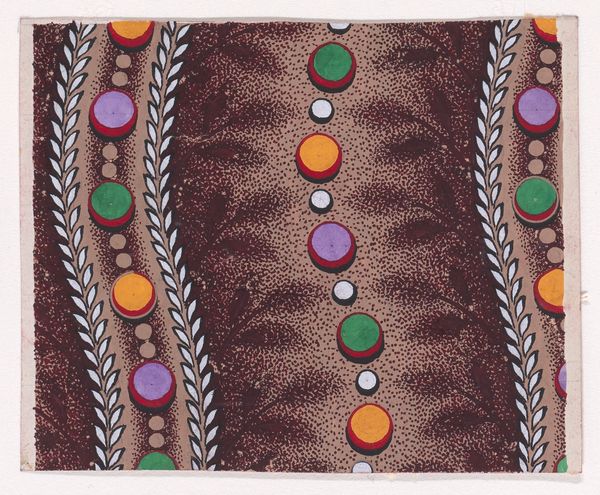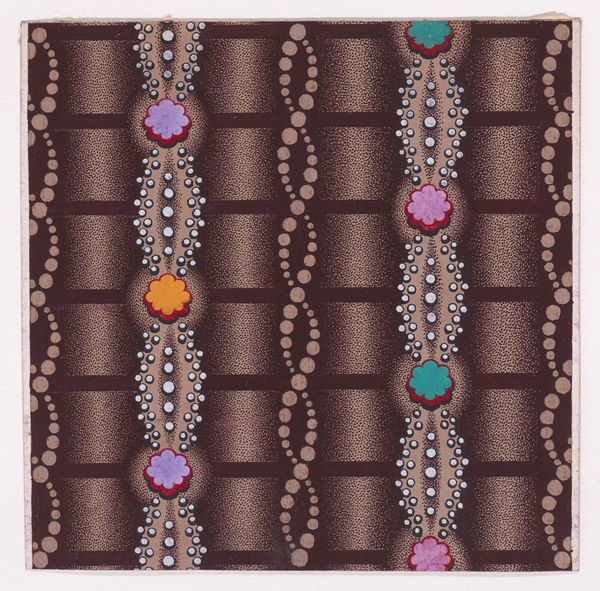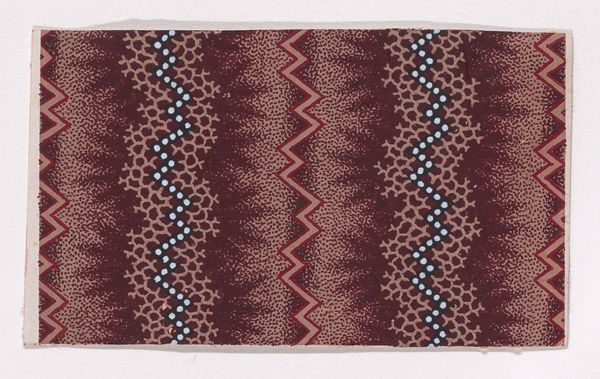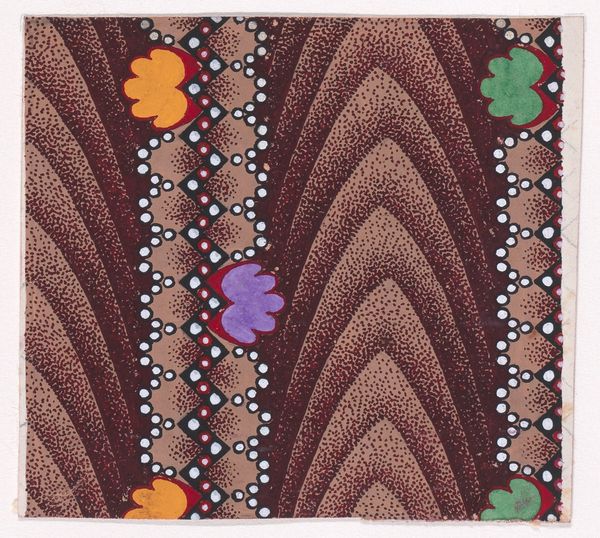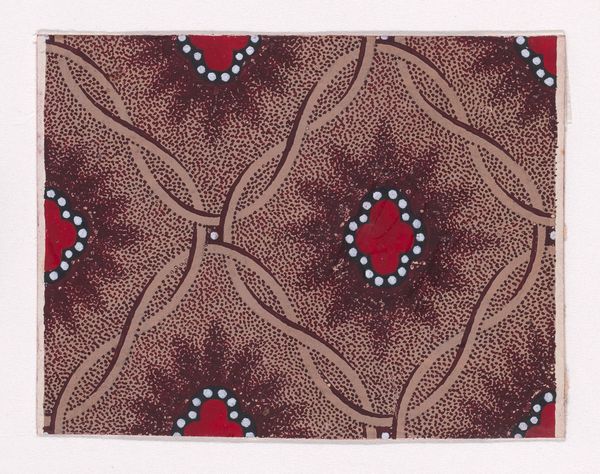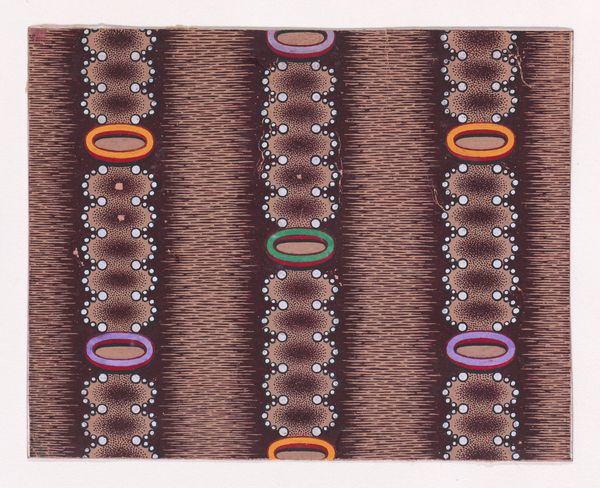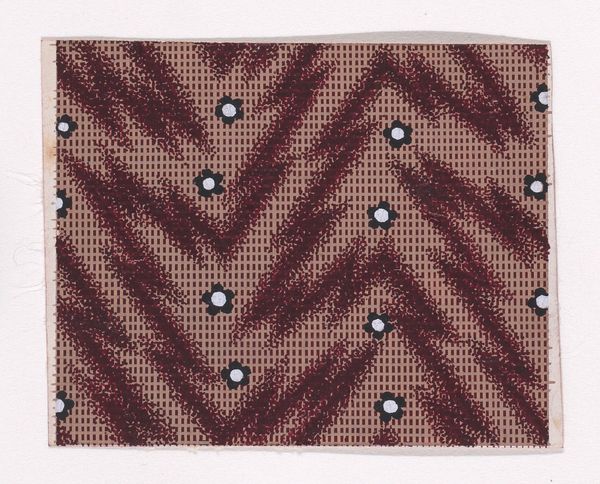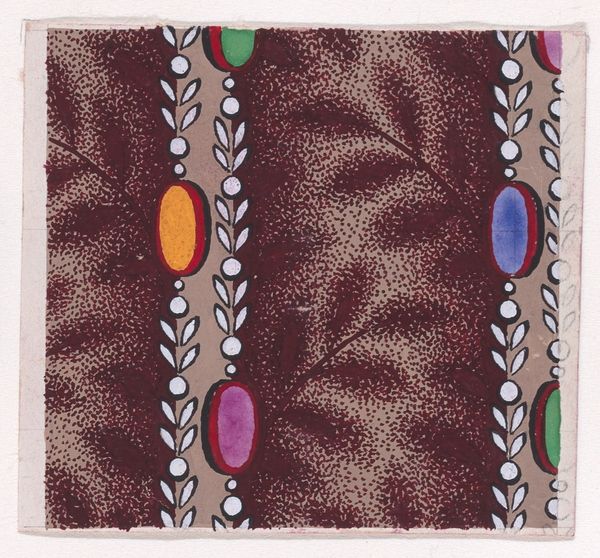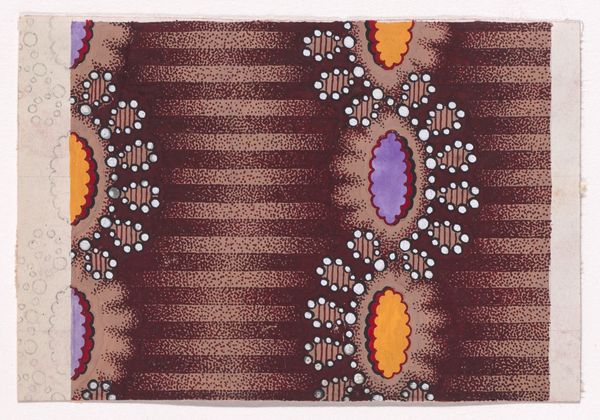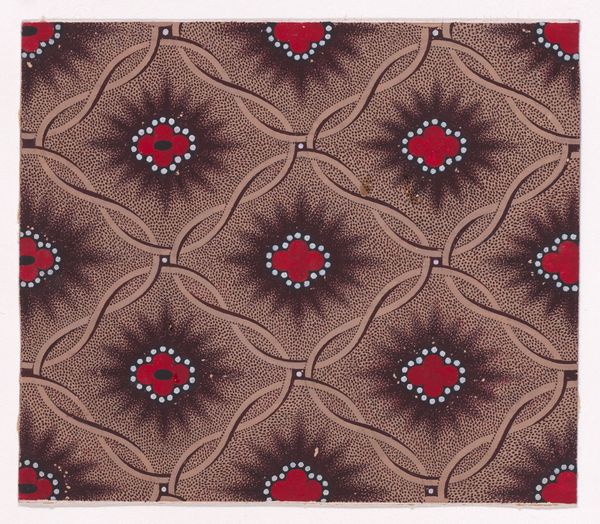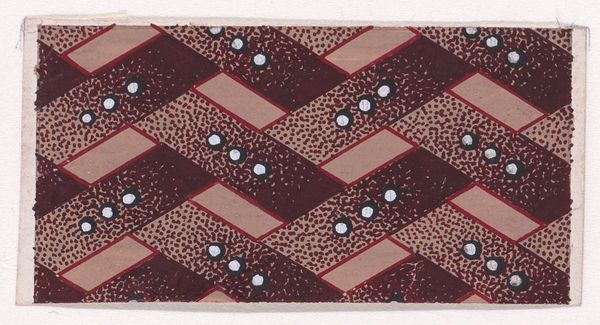
Textile Design with Alternating Vertical Strips of Pearls and Stylized Leaves 1840
0:00
0:00
drawing, print, textile
#
drawing
# print
#
pattern
#
textile
#
geometric pattern
#
pattern background
#
pattern design
#
ethnic pattern
#
geometric
#
repetition of pattern
#
vertical pattern
#
pattern repetition
#
textile design
#
layered pattern
#
combined pattern
Dimensions: Sheet: 4 1/2 × 5 3/8 in. (11.4 × 13.7 cm)
Copyright: Public Domain
Curator: This textile design, dated 1840, is a drawing and print of alternating vertical strips of pearls and stylized leaves and currently residing at the Metropolitan Museum of Art. Its organized repetition of simple forms gives a sense of ordered elegance. How does it strike you? Editor: It's interesting. It feels almost like a transitional piece, caught between historical motifs and the emerging industrial production of textiles. What kind of social context would have shaped a design like this? Curator: Precisely. Consider the early 19th century and the rise of the middle class. They sought affordable yet stylish goods, fueling demand for printed textiles. The vertical stripes lend themselves well to the mechanics of early textile printing, while the motifs—pearls and stylized leaves—suggest aspiration and a connection to nature, popular themes in a rapidly urbanizing world. Do you see how the imagery negotiates class desires within a changing economic landscape? Editor: That's a fascinating connection. So, the design isn't just aesthetically pleasing, but it also embodies certain societal values of that time? Curator: Absolutely. Textile designs, especially those mass-produced, served as powerful visual statements. They reflect not only artistic trends but also social structures, economic realities, and even the technological capabilities of their era. How might the museum's display of this textile contribute to its meaning today? Editor: Well, placing it in a museum elevates it from a functional object to a piece of art. It invites us to analyze it, not just use it. The design gains historical weight and academic interest, shifting away from the intent of it just being an everyday good. Curator: Exactly! And by studying it, we gain insight into the lives and values of those who produced and consumed it. Editor: I see it differently now! Thanks for putting this design in its time. Curator: And thank you for bringing a fresh perspective. Looking at art this way helps reveal the layers of meaning woven into even the simplest designs.
Comments
No comments
Be the first to comment and join the conversation on the ultimate creative platform.
